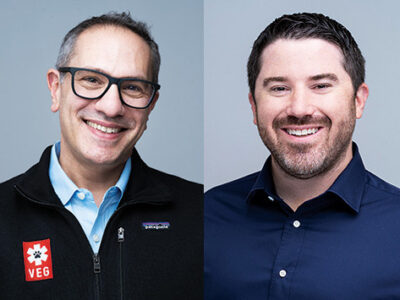
TV advertising is not dead. Online advertising metrics are deeply flawed. And that daily heap of commercial messages we are all bombarded with? It doesn’t translate to white noise. A good ad, it appears, still has a way of cutting through the clutter.
These are just a few of the findings of the Future of Advertising project, an initiative led by Yoram (Jerry) Wind, the Lauder Professor at Wharton, designed to inject a hefty dose of empiricism into an industry that has lately become prone to fits of self-doubt. The culmination of the yearlong endeavor, run out of Wharton’s SEI Center for Advanced Studies in Management, which Wind directs, took the form of a special issue of the Journal of Advertising Research published in June.
Advertising, it is often said, is a delicate art. But as the effectiveness of its traditional forms continues to be questioned, Wind believes that the firm pillars of science will ultimately determine its fate.
The Future of Advertising project got its start in the summer of 2008 as Wind, the author of more than 20 books on marketing, took note of a number of tectonic shifts in the marketplace.
With the rise of social-networking sites and online forums, consumers appeared to be gaining ever greater influence over the perceptions of products and brands, an area previously dominated by advertisers. New media platforms—from podcasts to Twitter—threatened to siphon advertising dollars away from television and print. And the need to justify advertising expenditures seemed to have driven up the demand for sophisticated measuring devices that traditional media were hard-pressed to deliver.
The result was an apocalyptic sentiment that was beginning to pervade much of the advertising world. “There started to be discussions about the end of advertising,” Wind recalls.
The way out of these dark woods, Wind reasoned, was to establish a baseline for what is scientifically known about current advertising practices.
“We can either stumble blindly into this brave new world,” he wrote with co-author Byron Sharp, director of the University of South Australia’s Ehrenberg-Bass Institute for Marketing Research, “or we can take stock of what we really know and seek to apply this knowledge to the changes we see around us.”
In December 2008, the Future of Advertising project hosted a conference at Wharton that brought together more than 100 global leaders in advertising to hear about 40 papers chosen by Wind and his team. Each presenter had five minutes to present his or her findings to an audience that included executives from Google, Crispin Porter + Bugusky, Neilson Online, Cisco Systems, IBM, Microsoft, and others. “The rest of the time was devoted to discussion among the participants,” says project director Catharine Findiesen Hays. After the conference, 21 of the papers were selected for the Journal of Advertising Research’s special issue, guest-edited by Wind and Sharp.
The resulting treatise proceeds from the notion that advertising must firmly ground itself in science, tapping the same kind of methodologies used by medical researchers. “More than ever we need systematic research to understand the generalizability of our research findings,” Wind and Sharp write. “Armchair theorizing regularly lets us down.”
Accompanying each of the papers is what Wind calls an Empirical Generalization, a law-like takeaway from the research that can be applied to multiple contexts. Wind justifies the use of such a lofty term by invoking the criteria used for choosing the papers. Rather than focusing on the most recent individual studies, which have a way of grabbing attention by offering a new but unverified approach, Wind and Sharp opted largely for meta-analyses that encompassed multiple studies to reach more broadly based conclusions. The end result is something of a master list of current dos and don’ts for advertising that, in some cases, paints a surprisingly rosy picture for traditional advertising.
For example, according to work by Joel Rubinson, of the Advertising Research Foundation, the boob tube still reigns supreme. Despite frequent predictions of this medium’s demise, he found that TV ads are as effective at generating “sales lift” as they were 15 years ago. What’s more, television remains “more effective than online or print advertising.” In other words, advertisers who focus efforts in this realm could still be making one of the safest advertising bets there is.
A related finding addresses one of the biggest worries for television advertisers: that DVR devices like TiVo have rendered television advertising obsolete due to a viewer’s ability to fast-forward through commercials. “This denies the speed with which neurons classify things that are observed based on previous exposures,” argues Erik du Plessis, of the South African research-based consulting group Millward Brown. He cites research indicating that if a viewer has seen a commercial before, at regular speed, fast-forwarding through it doesn’t change recognition or likeability patterns. “They experience similar emotional memories as when they first cognized the advertisement,” he writes.
Meanwhile, another paper concludes that advertisements placed in traditional media are more likely to leave a positive impression on viewers than those viewed on digital media.
On the digital front, Gian M. Fulgoni and Marie Pauline Mörn, of the media-research company comScore, looked at whether online display ads influence web-surfers who don’t actually click on them. Click-through rates for these kinds of ads average only one-tenth of one percent. Yet Fulgoni and Mörn, drawing on over 170 studies, found that they significantly affect the behavior of passive viewers, leading to increases in site visitation, brand-name web searches, and sales.
But might the sheer proliferation of advertisements undermine the apparent effectiveness of any one of them in particular? A paper titled “How Clutter Affects Advertising Effectiveness” tackled that question by consolidating four fresh data sets with past research. The upshot: a crowded ad environment does little to hurt a commerical that’s likeable to begin with. “Doubling the clutter,” the authors note, “does not halve the number of advertisements recalled.”
Thus far, outside assessments of the Future of Advertising project have been positive. In the trade magazine Advertising Age, journalist Jack Neff writes that this special issue produced some “decidedly calming conclusions” about the “crisis in advertising.” Yet Wind contends that these papers were just the beginning.
The next phase of the project, which involves gathering a database of successful “experiments” currently under way at companies around the world, is now in the works. “The first step was to figure out what research was out there,” says Hays. “But there are many more questions for marketers in the digital age.” A big one involves evaluating some of the ways new-media approaches are being tried in tandem with old-media standbys, to see what combinations and circumstances yield optimal results.
Wind and his team are in the process of developing a “portfolio orchestration model,” which would provide advertisers with an evidence-based rationale for mixing and matching new- and old-media strategies much the way a financial portfolio manager selects investment vehicles for clients.
By and large, detailed data about the successes and failures of particular advertising campaigns can be hard to come by. Marketing gurus have a way of remaining decidedly tight-lipped about their approaches, so as not to help their competition—or let consumers peek behind the curtain. But Hays believes that this clandestine dynamic is changing, and that the Future of Advertising project is well-positioned to act as something of an open-source knowledge bank for this ever-changing industry.
“We are an independent institution,” she says, slipping into the sort of language that resonates with ad men everywhere. “During this re-definition of advertising, it’s become pretty clear that Wharton is a brand that people can trust.”
—Christopher Percy Collier




